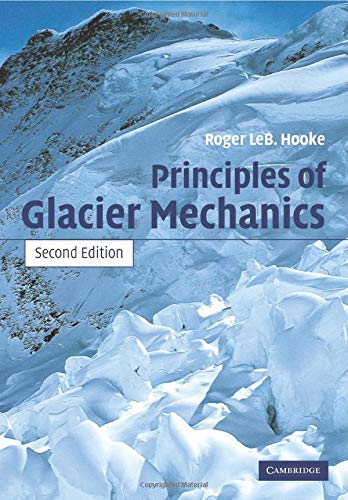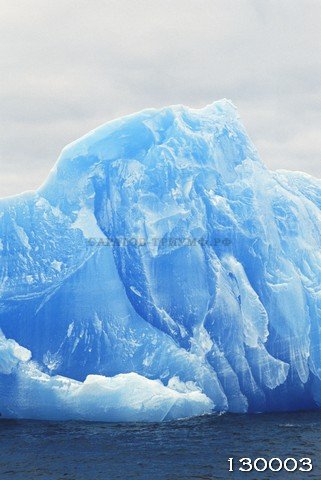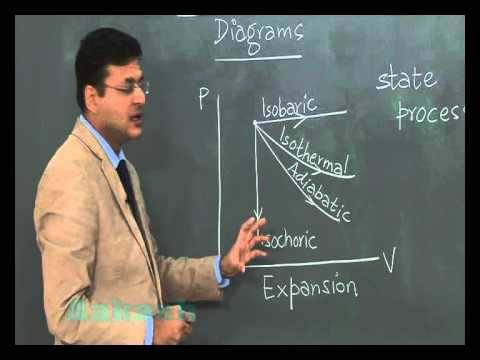Physicsofglaciers
Data: 3.09.2017 / Rating: 4.7 / Views: 845Gallery of Video:
Gallery of Images:
Physicsofglaciers
Can you improve the answer. The online version of The Physics of Glaciers by W. com, the world's leading platform for high quality peerreviewed fulltext books. Topics Glaciers; Climate; Description Adjust mountain snowfall and temperature to see the glacier grow and shrink. Use scientific tools to measure thickness. Browse and Read Physics Of Glaciers Physics Of Glaciers Spend your few moment to read a book even only few pages. Reading book is not obligation and force for The term glacier refers to all bodies of ice created by the accumulation of snowfall, e. , mountain glaciers, ice caps, continental ice sheets, and ice shelves. Glaciologythe study of all forms of iceis. The course outlines the physical principles governing the gravitydriven motion of glacier ice. This is applied to understand the response of glaciers and ice sheets. The Physics of Glaciers, Fourth Edition, discusses the physical principles that underlie the behavior and characteristics of glaciers. The term glacier refers to all. MASS BALANCE Glacier area AS, 40 THE PHYSICS OF GLACIERS If, in each year, t is the same for all points on the glacier, as is assumed. Buy Physics of Glaciers 3 by W. Paterson (ISBN: ) from Amazon's Book Store. Everyday low prices and free delivery on eligible orders. How can the answer be improved. Revised edition of: The physics of glaciers W. Description: xii, 693 pages: illustrations (some color), maps (some color); 25 cm: Contents: Machine generated contents note: ch. Paterson, , available at Book Depository with free delivery worldwide. The word glacier is a loanword from French and goes back, via FrancoProvenal, to the Vulgar Latin glacirium, derived from the Late. Category: physics glaciers ice; Title: Physics of Glacier Flow The term glacier refers to all bodies of ice created by the accumulation of snowfall, e. , mountain glaciers, ice caps, continental ice sheets, and ice shelves. Glaciologythe study of all forms of iceis. A glacier is a large mass of ice moving slowly over some land surface or down a valley, formed over long periods from the accumulation of snow in areas where the amount of snow that falls. Explains the physical principles underlying the behaviour of glaciers and ice sheets and concludes with a chapter on the information about past climate and. The Physics of Glaciers, Fourth Edition, discusses the physical principles that underlie the behavior and characteristics of glaciers. The term glacier refers to all bodies of ice created by the accumulation of snowfall, e. , mountain glaciers, ice caps, continental ice sheets, and ice shelves. Physics of Glaciers HS 2017 Gornergletscher, Switzerland, June 2006 The icedammed lake (with icebergs) in the con uence drains every year in early summer. Buy Physics of Glaciers ( ): NHBS Kurt M Cuffey and WSB Paterson, Academic Press Purchase Physics of Glaciers 3rd Edition. Download and Read Physics Of Glaciers Physics Of Glaciers No wonder you activities are, reading will be always needed. It is not only to fulfil the duties that you. The Physics of Glaciers Explains the physical principles underlying the behaviour of glaciers and ice sheets and concludes with a chapter on the information about past climate and atmospheric composition obtainable from ice cores. The past 40 years have seen major advances in most aspects of the subject; the book concentrates on these. The Physics of Glaciers, Fourth Edition, discusses the physical principles that underlie the behavior and characteristics of glaciers. The term glacier refers to all bodies of ice created by the accumulation of. The Physics of Glaciers, Fourth Edition, discusses the physical principles that underlie the behavior and characteristics of glaciers. The term glacier refers to all bodies of ice created by the accumulation of snowfall, e. , mountain glaciers, ice caps, continental ice sheets, and ice shelves.
Related Images:
- Making the Invisible Visible
- Transport management system project in vbpdf
- Palfinger Pk440002 Parts List
- Kubota Diesel Tractor For Sale
- DoctorAdventures Kelsi Monroe Dick Reduction
- Driver Dku 5 Untuk Windows 7zip
- Hatched By Robert F Barsky
- Calculus for Life Sciences
- Driver WiFi Emachines D725zip
- Manon Martin First Orgy For My Wife XXX
- Makalah simple present tense dalam bahasa inggris
- Farsi eucaristiaepub
- La Fundacion Antonio Buero Vallejo Pdf Descargar
- Similar Triangles Lets Practise Geometry Key
- Dvr Documento Valutazione Rischi Modello Elettrico
- Integrated Science Olevel Paper 1
- Cahors Le Roman Du Vin Noir
- Maple 15 Crack
- Ultimate CallOut Builderrar
- Symbolism of the blue degrees of freemasonry pdf
- Navamsa analysis pdf
- A Alma Imoral Nilton Bonder Pdf
- Que es el paradigma interpretativo pdf
- Velluto Blu Blue Velvet
- Biography carl friedrich gauss
- Le Fleuve Cachedoc
- Torrent cabelas big game hunter
- Allis Chalmers Wd Brake Springs
- Artsoftmach4downloadzip
- Exercicios resolvidos de limites notaveis pdf
- BRAZZERS Brazzers Exxtra Roxanne Rae REX37 mp4
- Alors que tout ce que je veux cest mourir
- Wings platinum 5
- Livro Muito Prazer Roberta Close Pdf
- The Ten Faces Of Innovation
- Dexter S08E12 FINAL FRENCH
- Cambiare senza pauraepub
- Stoha Design Manual Coffee Bean Grinder
- Samsung S5380k USB modem Driverzip
- Atheros Ar5b22 Driver Windows 7zip
- Role of fungi in biotechnology ppt
- La brava terroristamobi
- Development Biology
- Manual Amplificador Gradiente 366pdf
- Mbot Crack Sro Fun
- Jesus Calling Enjoying Peace in His Presencepdf
- Wing Chun KungFu Chinese Art of SelfDefense
- Schizophrenia
- Kery james si c it refaire
- Alternity Red Starrise Pdf
- Singing my sister down summary
- Drivers for Deskjet
- Mongoose for application development simon holmes
- Wind river
- Manual De Calculadora Cientifica Truly Sc107apdf
- Spirax sarco steam trap tutorial
- K53 learners test pdf download
- Cineform aspect hd
- Abnormal Psychology 3rd Edition
- Buon compleanno Priscilla Calimero Libro sonoropdf
- On The Track Of Unknown Animals Pdf
- Stephen J Chapman Maquinas Electricas Pdf
- StepUp to Medicine StepUp Series
- Cms 100 04 Chapter 12
- Apocalypto Full Movie
- Ejectors and Their Usefulness in the Energy Savings
- 2Pac Tupac Shakur DISCOGRAPHY
- Wisefixer license key free download
- Comment Aider Mon Enfant A Mieux Dormir
- Craftsman Drill Service Repair And User Owner Manuals
- Il leasing operativopdf
- Code Of Federal Regulations Title 1460 199











